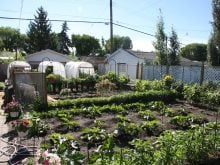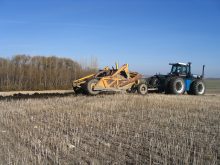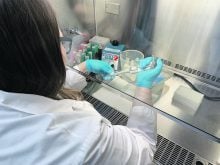Pedigree seed tested in Saskatchewan so far this winter has a relatively high quality, but that doesn’t mean growers shouldn’t use caution when sourcing their seed.
Jason Danielson of Discovery Seed Lab said compared to previous years the durum seed stock looks good, while growers should be cautious when sourcing oats and legumes.
“Germs and vigours are looking pretty good on average, but there are some pretty big ranges out there. Oats and lentils are kind of red flags,” Danielson said during his presentation to the Saskatchewan Seed Growers Association during Crop Week in Saskatoon last week.
Read Also

Taking a look inside Canada’s seed regulatory overhaul
ive years, eight task teams, 130 volunteers and 135 recommendations later, Canada’s seed industry is still waiting for meaningful regulatory change.
Wheat germination averages throughout the province are looking pretty good, with 94 percent germination and 89 percent vigour.
Danielson said growers should be satisfied if the germination and vigour are within 10 points.
He said the lab keeps track of the number of samples that fall below 85 percent germination.
“That 85 percent is sort of your decision point on whether or not that’s good seed or seed that maybe you should start looking elsewhere,” Danielson said.
There are four times more fails in the number of wheat samples, with less than 85 percent germination, than there were last year.
“Almost 10 percent, almost one in 10 (wheat) samples that are coming through the lab wouldn’t make that 85 percent germ, so it’s a little deceiving. When you see the 94 percent you think everything is good and you don’t need to test, but there is stuff that is coming back not looking good.”
Oats are more of a concern with an average germination of 85.8 percent and a vigour of 78 percent. Twenty percent of the submitted material failed to meet the 85 percent germination standard.
Barley is a similar story to oats with the averages looking good with germination at 92.2 percent and vigour at 88 percent, but nearly 20 percent of the samples aren’t making that 85 percent minimum germination threshold.
Discovery Seed Lab is starting to see a lot of cracking in legumes, which can dramatically affect germination and vigour of the seed stock.
“It’s something that if you test in the fall you might not see, but through storage conditions and the type of winters we’ve been having it seems to be a lot more prevalent in the spring,” Danielson said.
Field peas had a germination 91.2 percent and vigour of 88.6 percent, but 15 percent of samples had less than a 85 percent germination rate.
He said the pea samples coming in later in the season are starting to show more deads and abnormals that are linked to cracking.
“This is probably the material that came off early, came off dry, been handled a couple times and the seeds just don’t have the resilience that they have in a quote unquote normal year where they are not taken off as dry,” Danielson said.
“Before seeding you need to get at least another germ done to make sure that hasn’t fallen off; ideally a germ and a vigour will tell you more about it.”
Lentils are not as bad as peas in terms of cracking. All types of lentils combined for an average of 95.8 percent germination and 89.2 vigour. Less than 4 percent of samples tested below 85 percent germination.
Flax had a germination of 91.2 percent and a vigour of 86.2 percent and 10 percent of samples testing below 85 percent germination. Last year only six percent of flax samples had less than 85 percent germination.















